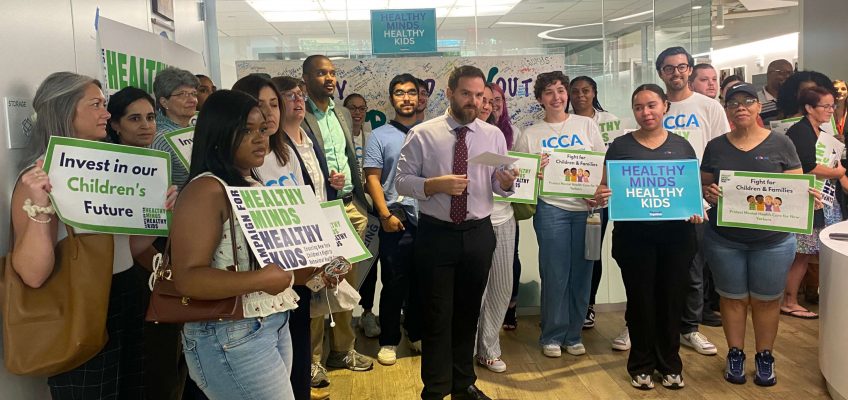By JAMES POLLARD
NEW YORK (AP) — Online creators from dozens of countries, led by MrBeast and popular science YouTuber Mark Rober, are launching a $40 million fundraiser to build water quality projects around the world.
The monthlong crowdfunding campaign, touted as the biggest YouTube collaboration and called #TeamWater, promises to rally their combined 2 billion subscribers around combating unsafe water sources. Funds will primarily benefit WaterAid, an international nonprofit that builds community-tailored infrastructure ranging from solar-powered wells to rainwater harvesting systems.
More than 2 billion people lacked access to safely managed drinking water as of 2022, according to the United Nations. Organizers want to put a dent in that figure by providing sustainable access for 2 million people — and instilling new generations with a lifelong commitment to advocacy.
Joining #TeamWater are smaller creators and some of the biggest names online such as streaming giant Kai Cenat, trendy YouTubers the Stokes Twins and sports entertainers Dude Perfect. Whether they are filming serious explainers or silly water-themed challenges, creators are encouraged to produce content that is authentic to their brand.
Water access was identified as a solvable issue that could also unite their mass global following. But MrBeast CEO Jeff Housenbold acknowledged they are better awareness builders than infield executors So, they sought a partner with global reach, existing community partnerships and long-term change-making abilities.
That led them to WaterAid. The organization first started talking with MrBeast’s team two years ago, according to WaterAid America CEO Kelly Parsons.
She said WaterAid typically engages communities for up to a year designing the proper solution. That work sometimes involves training local water technicians.
“It all begins and ends in the communities we work with and through them to ensure design that lasts,” Parsons said. “It’s about people more than about plumbing.”
While WaterAid would did not provide a list of all the places where funds would go, countries include Colombia, Bangladesh, Ecuador, Malawi and Kenya. Charity partners GivePower and the Alok Foundation are also helping implementation in rural Kenya and Brazil, respectively.
U.S.-based projects include an atmospheric water generator for an assisted living facility in Jackson, Mississippi, where the fragile water system nearly collapsed three years ago. The nonprofit DigDeep is helping fix crumbling infrastructure in the small town of Rhodell, West Virginia.
Related Articles
In a miniature world, climate change and environmental issues loom large
Canadian wildfire smoke prompts air quality alerts across Minnesota and the Great Lakes region
Trump’s EPA is targeting key vehicle pollution rules. What that means for carmakers
Trump administration cancels plans to develop new offshore wind projects
Eagan residents express concern over elevated lead levels, timeline of events
Alex and Alan Stokes, whose 129 million subscribers make them one of YouTube’s biggest channels, filmed in a Nepalese village where the campaign is building a 15,000-liter tank. The trip recalled their own upbringing in a Chinese town where their grandfather walked miles to fill 5-gallon water jugs.
“Being there in person was definitely one of those experiences that brought it all back for us,” Alex said. “(We) saw these kids there and it just reminded us a lot of our childhood as well.”
The multi-platform drive follows the 2019 #TeamTrees and 2021 #TeamSeas campaigns, which reportedly drew more than $50 million altogether. That money helped plant millions of trees and remove millions of pounds of waste from bodies of water.
Those humanitarian efforts, however, drew criticism that they promoted oversimplified solutions to complicated issues and applied Band-Aids instead of addressing the main drivers of forest loss or ocean pollution.
“Ideally, you would not use philanthropy simply to take away the symptoms of whatever is the problem,” said Patricia Illingworth, a Northeastern University philosophy professor who writes about ethics in philanthropy. “But, rather, you would want to address the root cause.”
Matt Fitzgerald, a digital campaign strategist who has organized the efforts, said the campaigns were never intended to be the “end all be all.” He hopes they serve as an entry point for deeper commitments.
While the previous two campaigns were about “a fist-bump, Mother Earth-style of environmentalism,” he said, this one seeks to center people while still “keeping the planet top of mind.”
“No matter how big a mass internet mobilization moment might be, real progress on these issues demands people continuing to pay attention and continuing to stay involved,” Fitzgerald said. “To me, the way you do that, is you reach people’s hearts before you try to convince them with their minds.”
Associated Press coverage of philanthropy and nonprofits receives support through the AP’s collaboration with The Conversation US, with funding from Lilly Endowment Inc. The AP is solely responsible for this content. For all of AP’s philanthropy coverage, visit https://apnews.com/hub/philanthropy.




